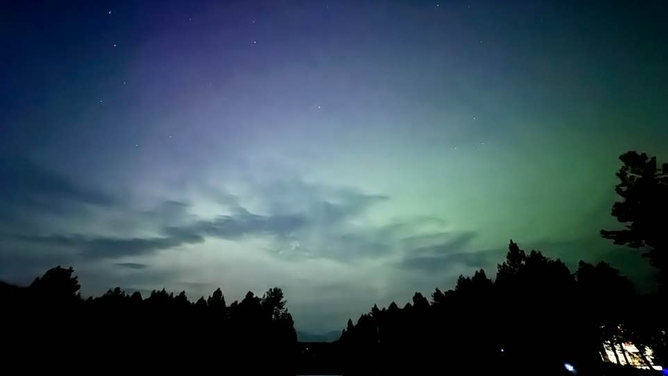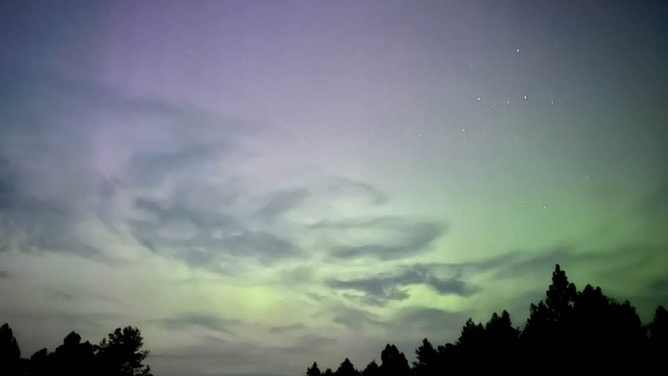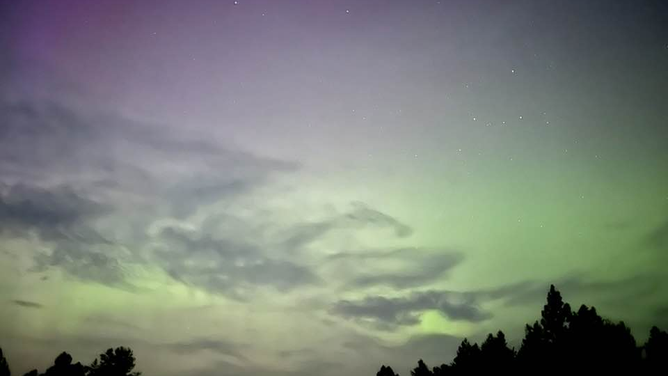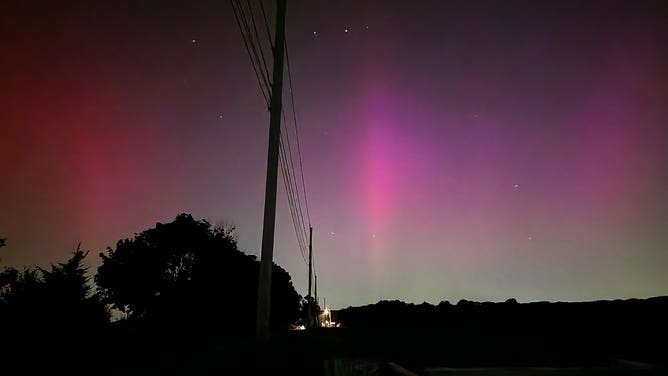Geomagnetic storm wanes after creating Northern Lights during Perseid meteor shower
NOAA's Space Weather Prediction Center said severe G4 geomagnetic storming was observed and forecast continued through Monday. Solar storms created displays of Northern Lights seen as far south as the Mid-Atlantic.
Northern lights on display from Montana to Maine during geomagnetic storm
A strong geomagnetic storm brought displays of Northern lights as far south as the Midwest early Monday morning. NOAA's Space Weather Prediction Center said the geomagnetic storming was caused by a coronal mass ejection from the Sun passing Earth.
Those who waited up late on Sunday night to see the Perseid meteor shower peak got a celestial treat after space weather caused some of the most vivid Northern lights across the Midwest and Northern U.S. since May's historic solar storms.
NOAA's Space Weather Prediction Center (SWPC) issued a G3 Strong Geomagnetic Storm alert on their five-point scale after G3-level storming was observed from a "major disturbance" in Earth's magnetic field as a coronal mass ejection passed Earth. Later on Monday morning, the SWPC said severe G4 geomagnetic storming was observed and forecast to continue through Monday evening.
"Geomagnetic storm conditions steadily intensified throughout the weekend into early Monday, culminating in a G4 (Severe) Geomagnetic Storm," the SWPC said.
This marks the most intense space weather since the May storms, which caused global displays of aurora lights seen as far south as Florida.
During a strong magnetic storm, the Northern Lights can appear farther south from the North Pole, which is what happened early Monday in places such as Pittsburgh and outside Chicagoland.
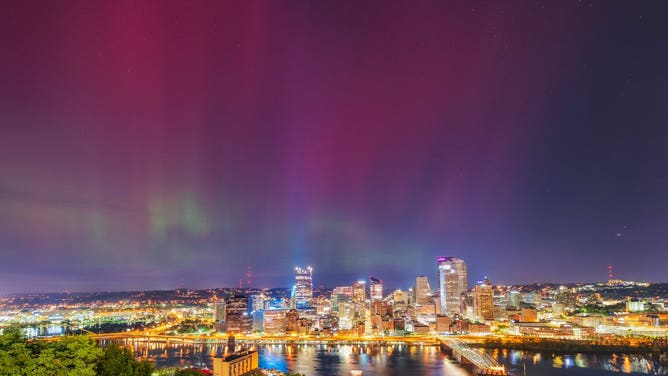
Northern lights seen above Pittsburgh, Pennsylvania on Aug. 12, 2024 during a strong geomagnetic storm.
(@DaveDiCello/X)
"I cannot believe it. This morning, for the second time in less than three months, the Northern Lights were visible over Pittsburgh. I went into the city a little before 2:00 to capture the Perseid meteor shower and there the lights were, plain as day over the city. Just unreal," DiCello wrote on X. The photo above taken by photographer Dave DiCello early Monday was his second encounter with aurora lights this summer.
The National Weather Service in Glasgow, Montana, captured the video below showing bright green dancing lights.
Northern lights dance above Glasgow, Montana
This National Weather Service video from the Glasgow, Montana office shows the Northern lights on Sunday, Aug. 11, 2024 during a geomagnetic storm.
Connecticut, Massachusetts, Wisconsin, Minnesota, Idaho and North Dakota also saw the colorful dancing lights caused by a barrage of electrons bouncing into Earth's magnetic field.
On Sunday night, fainter green and blue Northern Lights could be seen against the horizon in Ahtol, Idaho.
Sunday and Monday also marked the peak of one of the year's best meteor showers. Some who saw Northern lights also caught a Perseid meteor or two in their photos.
About two hours west of Chicago, the dazzling video below was recorded in Franklin Grove, Illinois.
Northern lights dancing in Franklin Grove, Illinois
Video capture by Landon Moeller in Franklin Grove, Illinois, shows bright pink, yellow, and green aurora lights dancing above the grasslands. The lights were created by a strong geomagnetic storm.
Astronauts on the International Space Station had some of the best views of the recent aurora light displays.
NASA astronaut Matthew Dominick captured images on Sunday with the Moon and glowing red and green Northern lights.

NASA astronaut Matthew Dominick rotated this image 180 degrees to show the Aurora lights as though you are looking down at Earth.
(NASA)
Aurora lights fade as solar storm conditions begin to wane
According to SWPC, moderate geomagnetic storming was observed through Tuesday morning, when the Geomagnetic Storm alert expired.
Space weather forecasts said the CME will continue to pass Earth through Tuesday, but there is great uncertainty in how long the effects will last.
"At least five flares with CMEs have been observed since August 10. Potential impacts of this level of storming include degradation of high-frequency communications at high latitudes and increased drag on satellites in low earth orbit," NOAA officials wrote in a news release. "SWPC forecasters have activated the North American Reliability Corporation Hotline to keep power grid operators informed of ongoing space weather activity."
Sunday and Monday's space weather comes as the Sun approaches the solar maximum in an 11-year cycle. The peak in the cycle is marked by more sunspots, which are associated with the CMEs that cause Northern lights. Space weather forecasters said on Aug. 8, the Sun likely reached its highest number of sunspots for Solar Cycle 25, with 299 observed sunspots.
The SWPC said the milestone also may be the highest sunspot number since at least July 2002.
Space weather forecasters said the sunspot total could be even higher and is being analyzed by international experts. The official total will be announced on Sept. 1.


